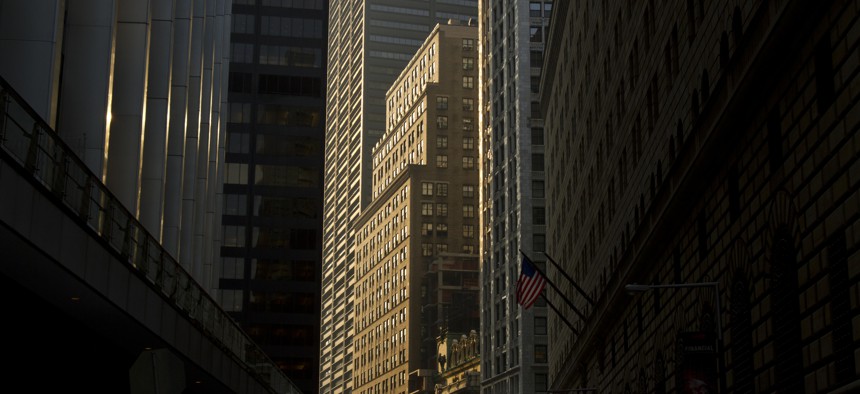Energy & Environment
Exclusive: Environmental, labor groups call for more climate funding in city budget
A letter to the City Council calls for investing an additional $600 million in the electrification of public schools and allocating more funding to help implement Local Law 97.

Labor and environmental advocates are calling for more enforcement of a New York City law aimed at transitioning buildings away from fossil fuels. Nick Pederson/Getty Images
New York City’s buildings account for more than half of the city’s greenhouse gas emissions. In light of recent extreme weather events, environmental organizations are calling for an increased investment priority for climate action. In a letter shared exclusively with City & State, a coalition of climate, labor and advocacy groups called on the New York City Council to advocate for new climate investments in the budget for the upcoming fiscal year 2025. The coalition, Climate Works for All, was coordinated by environmental advocacy organizations ALIGN and the New York City Environmental Justice Alliance.
The letter, addressed to all council members and staff, calls for investing an additional $600 million in the electrification of public schools. It also called for more funding to help implement Local Law 97, the ambitious 2019 city law that mandates a transition away from fossil fuels in buildings. The more than 35 signatories to the letter include labor unions such as District Council 37 and the New York State Nurses Association, as well as community organizations and climate advocacy groups such as New York City Environmental Justice Alliance, and the New York Public Interest Research Group.
Investments into the electrification of New York City public schools is essential to keeping residents living near safe from toxic pollutants, the letter argues. According to the letter, the additional investment in electrifying schools would put the city on track to upgrade 500 school buildings by 2030 and have a net-zero emissions school district by 2040.
ALIGN’s climate director Jenille Scott said that for ALIGN, the focus is on reducing carbon emissions in the long term. “Our Green Healthy Schools campaign, it’s a long-term campaign,” Scott said. “So that $600 million that we're looking to be invested right now is not just for our schools this year, but it's money that we want to be contributed to schools for upcoming fiscal years.”
Climate Works for All’s demands also include an additional financial investment into Local Law 97, which passed in 2019 and focuses on reducing the city's carbon emissions by targeting large buildings. Under the law, large buildings are required to reduce their emissions by 40% by 2030, and to achieve net-zero emissions by 2050. Initial reduction requirements for buildings over 25,000 square feet went into effect this year.
The Office of Building Energy Emissions Performance in the city’s Department of Buildings is responsible for compliance and enforcement of the law, but advocates have argued it has been understaffed despite its large responsibility. In 2023, there were 11 staff members at the department dedicated to enforcing the law – a number advocates called not close to enough to ensure the 50,000 buildings in New York City required to reduce emissions are taking action. That number of positions has increased and is now in the twenties range, but is still not sustainable, according to Climate Works for All. Their letter calls for funding at least 10 additional positions at the Department of Buildings and three to five positions at the Department of Housing Preservation and Development.

